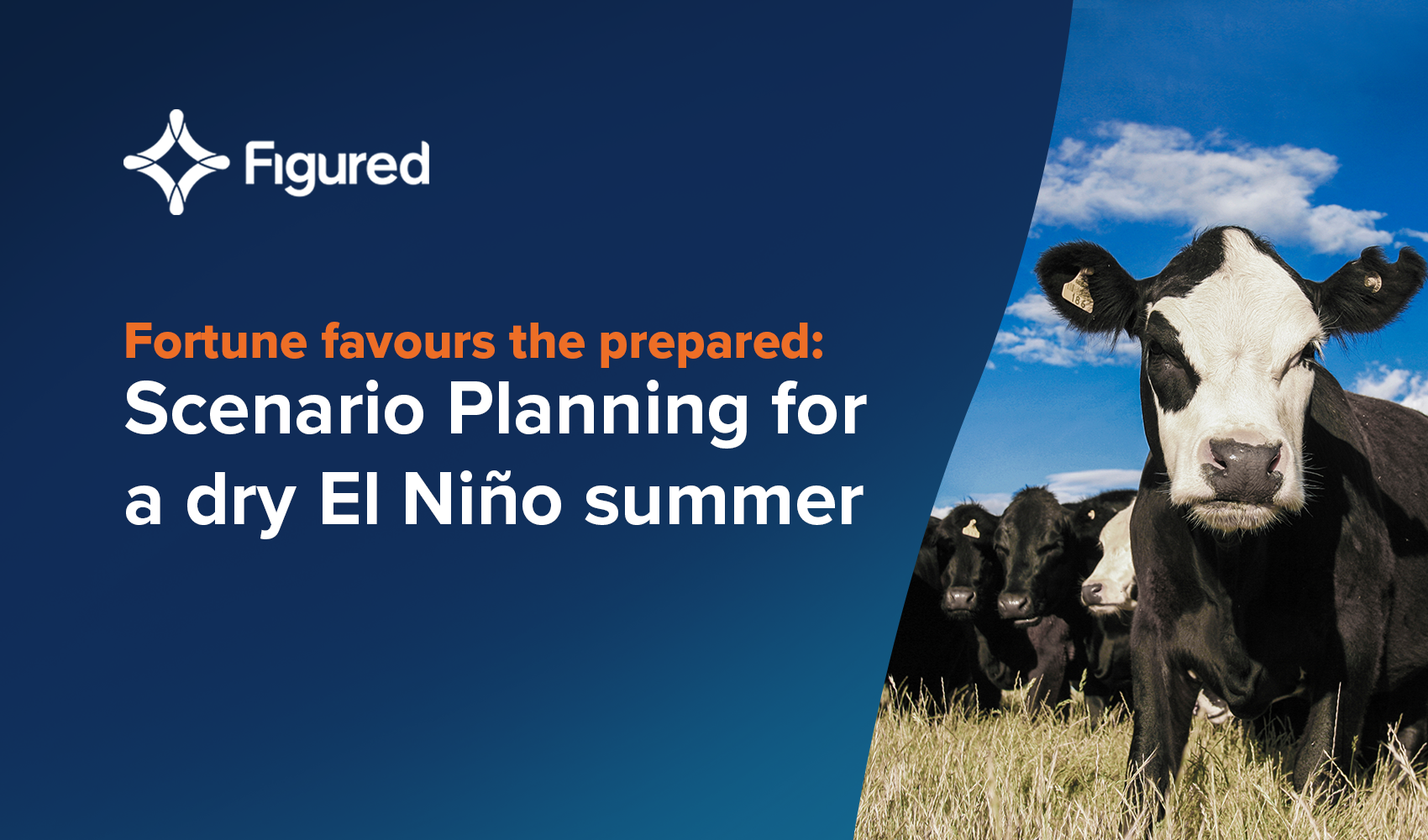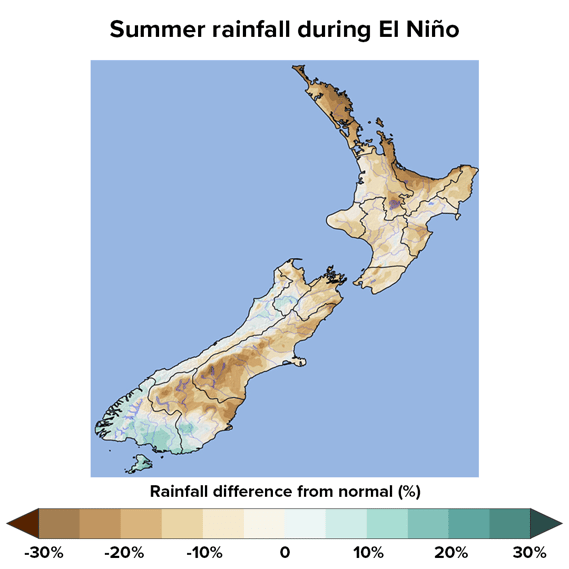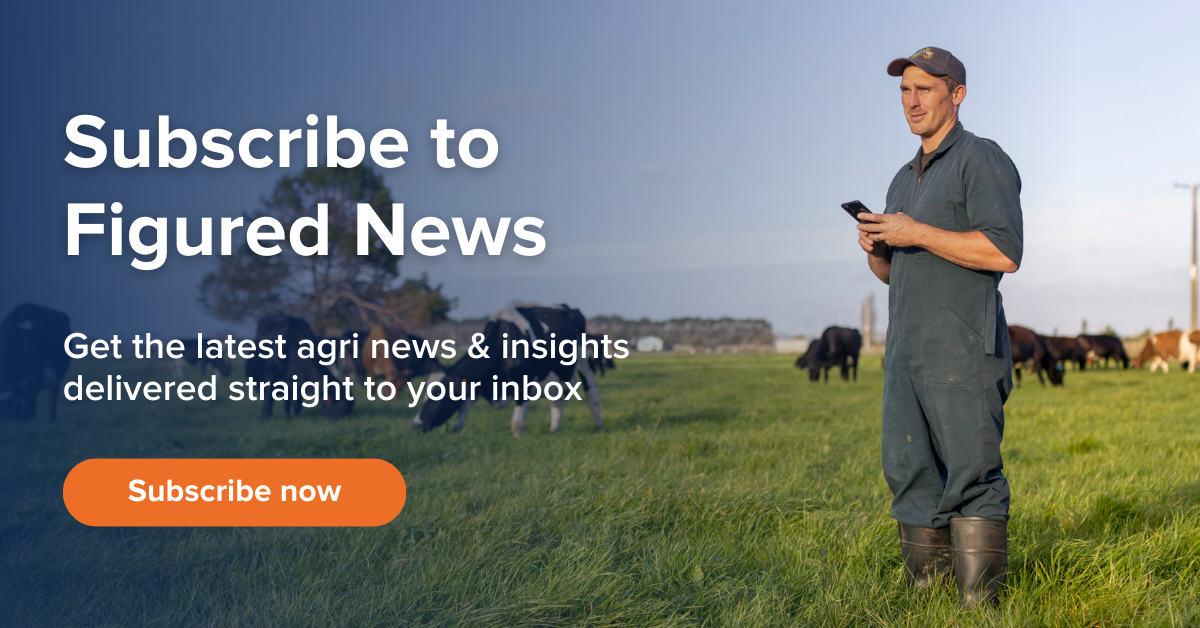By Admin
The response has been amazing from our partners to not just the recent dairy payout modelling we shared, but to then use that with Figured Insights to identify your most at-risk farmers and start the necessary conversations. Thank you all!
With NIWA releasing their updated season outlook for Sep-Nov alongside some pretty strongly-worded commentary and advice about the El Niño summer as a whole, it would be difficult to argue that we shouldn’t be taking this same payout approach and planning for an unusually dry El Niño summer. The visual representation of the data really brings home the regional variance as well as the potential severity
Source: Niwa.co.nz: average rainfall patterns during historical El Niño events
What could drought conditions mean for your farmers?
Like most of us, Figured is not in the business of weather forecasting nor climatology! But just like you, we deeply value and respect subject matter expertise. So when NIWA tell us that:
“this El Niño is in with the five strongest that have occurred in the last eight decades”,
we know that it is prudent to pay attention and take action. Whilst the impact will vary significantly by region, (in fact our friends in Southland look likely to have a damper-than-usual El Niño summer!), this is definitely a case of: “hope for the best and plan for the worst”
Whilst this is highly relevant, we must turn this future scenario into specific information at an individual farm level, so that you and your farmers can plan properly & take meaningful action. Fortunately we have the Figured platform for exactly this purpose and we’ve pulled together assumptions and numbers to use so you can easily do this at scale and start the conversations you need to.
Scenario planning for El Nino
If you’re not familiar with using Farm Reporter for scenario planning, you can find out more here in our help section. And if you’d like more help with that, please just get in touch with us directly.
Below are the two scenarios we believe will provide an indicative view of what the El Niño summer might look like for each of your farmers. We would absolutely encourage you to adjust these numbers as you see fit and based on your expertise in your own regions and knowledge of your farmers’ operations.
Summary of modelling assumptions:
Moderate drought scenario- 10-20% reduction in milk production depending on the region and likelihood of dry conditions (Dairy farms)
- 10- 20% reduction in Livestock sales/income with softening lamb and meat prices, weight gain reductions with dry conditions (Livestock)
- 20-30% increase in feed costs especially for eastern regions on North Island
- 5 - 10% increase in interest costs IF new debt is needed
Severe drought scenario
(Concerns mainly around Hawkes Bay, east NI regions and Canterbury/Otago)
- 20% reduction in milk production depending on the region and likelihood of dry conditions (Dairy farms)
- 20-30% reduction in Livestock sales/income with softening lamb and meat prices, weight gain reductions with dry conditions (Livestock)
- 30-40% increase in feed costs especially for eastern regions on North Island
- 5 - 10% increase in interest costs IF new debt is needed
You could add a small increase in Animal Health (5%) and/or water costs for irrigated farms in the South Island. Please reach out to your Partner Success Manager if you need any assistance in setting these Scenarios up on Figured.
We’re looking forward to getting around and talking with our partners. If you'd like to get in touch with use sooner, please feel free to reach out. You may also see below for further detailed assumptions you may wish to model out for your clients.
Additional detailed assumptions
Reduction in Pasture Growth:
Assumption: During a moderate drought, pasture growth might decrease by approximately 30-50%.
Impact: Reduced pasture growth leads to lower feed availability for livestock, impacting milk and meat production.
Milk Production Decline (Dairy Farms):
Assumption: Dairy farms may experience a 10-20% reduction in milk production during a moderate drought.
Impact: Reduced milk production directly affects revenue and income.
Weight Gain Reduction (Livestock Farms):
Assumption: Livestock farms may see a 10-20% reduction in weight gain during a moderate drought.
Impact: Slower weight gain can lead to longer feeding periods and increased expenses.
Increased Feed Costs:
Assumption: Feeding costs may rise by 20-30% due to the need for supplementary feeding during a drought.
Impact: Higher feed expenses which could become really pinched if we experience feed shortages especially the Hawkes Bay regions who have been hammered over the last season
Increased Water Costs:
Assumption: Water costs may increase by 10-20% as farms need to secure additional water sources or implement irrigation during droughts.
Impact: Higher water expenses add to overall operational costs.
Animal Health:
Assumption: Veterinary and treatment costs may increase by 10-15% due to higher disease prevalence during drought.
Impact: Higher animal health expenses increase operating costs.
Debt and Interest Costs:
Assumption: Farmers may need to take on additional debt, leading to a 5-10% increase in interest costs. With interest rates continuing to increase slowly and no immediate relief in sight, this will continue to hurt farm budgets



